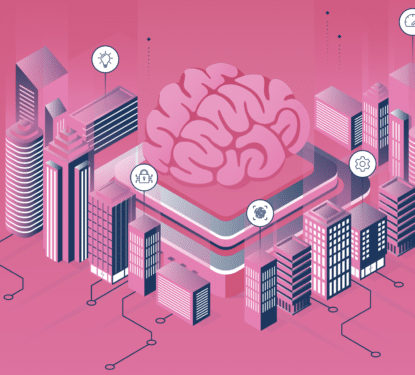“The average working life of a Boeing 747 is approximately 50 years, during which time it is refitted about six times. The necessity of making frequent upgrades to its electronic, communications and other systems requires that the design allows old technology to be rapidly removed and replaced with minimal disruption to the fabric of the plane,” explains a 2013 paper by the Royal Academy of Engineering on Smart Buildings.
The report Smart Buildings: People and Performance presents such parallels in order to emphasize the new technological reality in buildings and how the industry will need to adapt to it. “Buildings could be conceived as similarly upgradeable as technology changes, with elements added in such a way that they can easily be changed as technology and the building’s use develops,” the Academy’s paper continues.
The working life of modern buildings can potentially go far beyond 50 years. Buildings have a long tradition of upgrading systems throughout their lifetime, but typically choose to maintain more than upgrade as the building gets older and the needs of new technologies evolve further from the original design of a building. When core building systems eventually die of old age, expensive and disruptive upgrades have to be considered.
The system of increasing the efficiency of that upgrading process, to ensure a building maintains as high a performance level as possible throughout its lifetime is the focus of our latest report — Future Proofing Smart Commercial Buildings: Adding Value And Avoiding Obsolescence.
“Future Proofing is the process of anticipating developing and future trends to mitigate potential risks to a commercial building. A better understanding of potential future risks can help to minimize the chance of premature building obsolescence. Eventual building obsolescence may relate to the physical, aesthetic or, functional characteristics of a building,” the report outlines. “Future proofing approaches should also be designed to improve the overall resilience of the building to adapt to unforeseen shocks or changes to economic, social or environmental conditions.”
“In a smart building context, future proofing will involve the delivery of technical solutions that are flexible and adaptable to accommodate changing tenant demands over time; meeting the future needs and expectations of clients, end-users, and/or occupants in terms of health, safety, and comfort. As well as durability and sustainability, performance characteristics, maintainability, and serviceability,” the report points out before going into great depth on each.
Just like commercial aircraft, buildings should be designed from the outset with the full lifetime of the building at the center of the strategy. Currently, there is a huge knowledge transfer divide between the design and build phases, and the operation and maintenance phases. Meaning buildings are being designed and built with relatively limited input from those who will use the building for tens or even hundreds of years.

“Practical completion is the last chance the construction team has to audit the construction and systems work and remedy any defects before transferring responsibility to an almost totally different set of stakeholders that will be responsible for the ongoing building's operation,” explains the new report. “Any lack of effective data, information and responsibility transfer at this stage can have serious adverse effects on the operational effectiveness of a building. While the design & build phases of the building lifecycle may typically range from a combined 2-5 years, the “in-use” phase of building operation constitutes the vast majority of the building’s lifespan.”
To truly future proof a building, the needs of stakeholders throughout the building’s lifecycle must be considered within the context of potential future technological and other developments. Without such consideration, the performance of the building will start below its potential and diminish rapidly with time relative to those buildings that have future proofed properly.
Future proofing a building is far more complex than with commercial aircraft. The speed of technological development in this “4th industrial revolution” means that we can move through a generation of digital technology during the design and construction phases of the structure. In the smart building, digital, physical, and human systems exist alongside bricks-and-mortar, each with their own unique lifecycles, temporal characteristics, and levels of (un)predictability. The smart building industry needs its own approach and our new research draws from leading experts on the topic to provide the most up-to-date and comprehensive guidance on Future Proofing Smart Commercial Buildings.
“The commonly adopted iterative approach to technology solution development so prevalent in the IT industry also poorly aligns with the long-term planning and fixed design required for other building components,” advises the report’s detailed Lifecycle Assessment section. “The technology refresh cycle for smart buildings components is, however, inevitable, and should not be overlooked. Regular technology refresh allows cybersecurity to be maintained, and new emerging technologies often offer new value generation opportunities if the process is properly managed.”
Follow to get the Latest News & Analysis about Smart Buildings in your Inbox!



